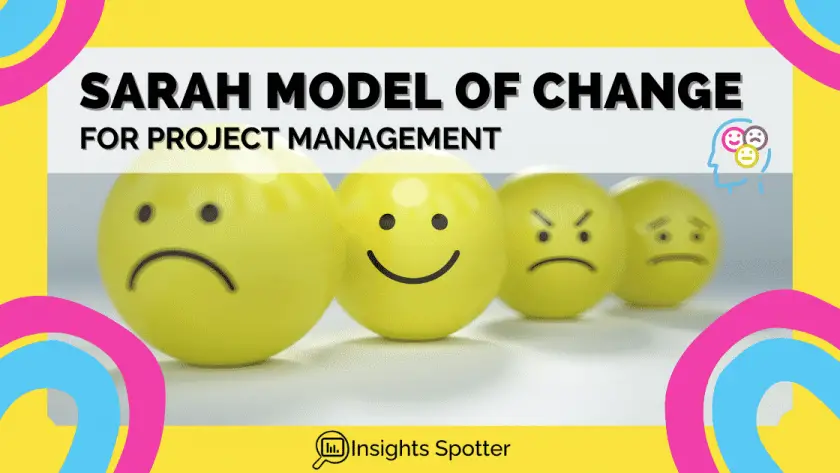SARAH Model Of Change: The Change Curve For Projects
WHAT IS THE CHANGE CURVE OR SARAH MODEL?
SARAH model of change helps to explain the emotions people experience in changing environments like projects. See, no one likes change! Yet, working on a project, you only deal with change, and we should know how to address it.
The SARAH model of change is the tool that models stakeholder behaviour and helps to understand the expected acceptance process during any project. Five emotional states are:
- Shock
- Anger
- Rejection
- Acceptance
- Hope.
Project management adapted the model from Elisabeth Kubler-Ross, the Change Curve.
Change takes people from their comfort zones, creates situations where power and influence shifts. Plus, everybody has their personality, thoughts and beliefs. In the business environment or project management, the severity of emotions may vary depending on the type of change, but it does feel real to people. Thus, as project professionals, we should know how to help someone work through these five emotions to ensure smooth project delivery.
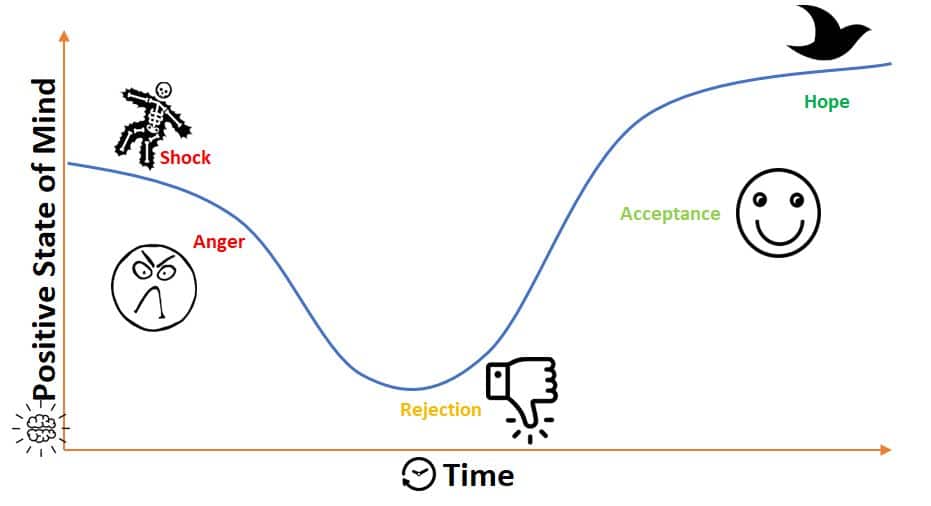
Why Is SARAH Model Essential in Project Management?
As an organisation grow and change, one challenge is to always improve or go out of business. The change might be due to various reasons like pressure from new external regulations or need to optimise due to increased competition. Thus, companies introduce projects to champion improvements.
“The Only Constant in Life Is Change.”- Heraclitus
You can check out various strategic tools you can use to identify the cause of change in my post about SWAT analysis.
Why Does SARAH Model Exist?
When you are on one of those change projects, you will be working with people who can be unpredictable, irrational and emotional, especially when they receive unexpected news. You would not be able to direct or lead these individuals to a common objective.
It is in human nature to get used to a comfortable life and resist any change. Hence, it is almost expected that change might not be as smooth as you hoped. One of the main worries for people is job replacement due to innovations or optimisations. Often people associate their worth with their job; therefore, individuals will meet the project’s threatening aspect of comfort with resistance.
If you want to be a great project manager or business analyst, only knowing hard skills like project planning or data analysis will not cut it, and you should brush up on your soft skills, which deal with emotions the right way.
The SARAH model helps you to understand five emotional reactions by individuals to any change. The idea behind this is that you need to manage change strategically, including emotions, to get the optimal outcome for an organisation.
Companies like to highlight that the most critical asset is the people that work for them. Thus, we need to make sure that the experience of change and outcome is positive for both employees and businesses.
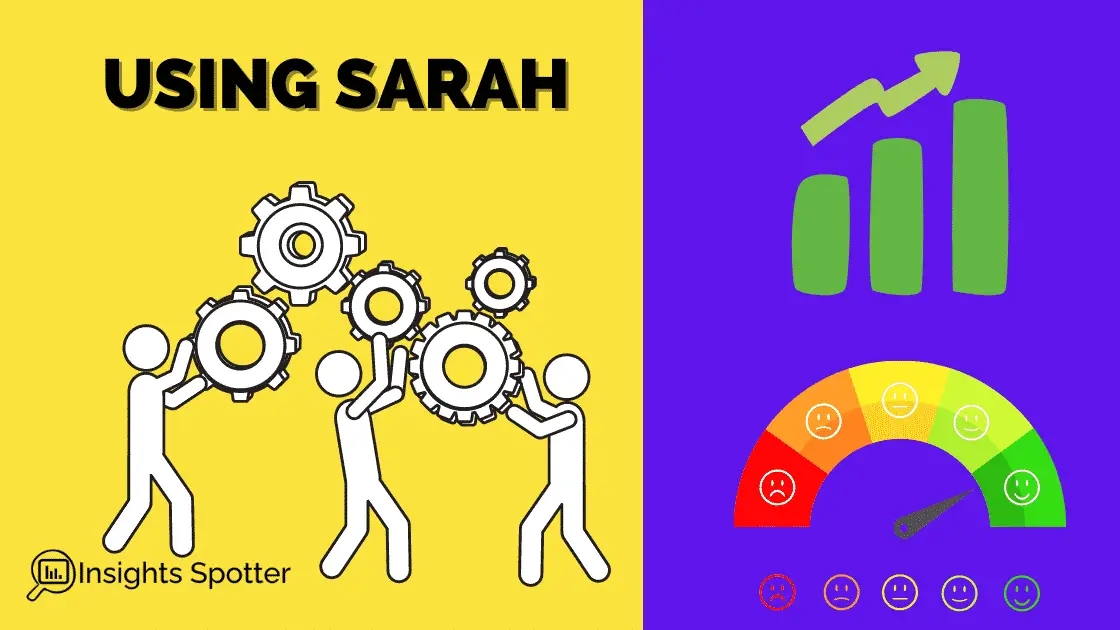
How To Use SARAH Model In Projects?
Knowing where somebody is on the SARAH model change curve gives an excellent starting point and helps adjust your message and approach. With the right messaging, you may encourage people to deal with their emotions more effectively. Honestly, you could apply SARAH much broader, but we will concentrate on projects for the post.
You may need to support an individual in the time of need if she/he is at the early stages of an emotional journey. Or if you meet someone who already accepted the change idea, you would be able to deliver messages and asks more directly.
The SARAH model image depicts sequential steps. Unfortunately for us, life is not as simple. Some steps might be skipped or several emotions experienced at the same time. The severity of experience will be directly correlated with the impact the change has on an individual.
Ultimately, as a project manager or business analyst, you will often want an affected stakeholder’s input or support. Hence, you will lead a person across the change curve and seek to ensure that he/she accepts the message with the right state of mind.
What Is SARAH Model Link With Elisabeth Kubler-Ross?
Interestingly, individuals’ emotions are surprisingly very similar when reacting to business change, the bad news or scary unknowns. Actually, the model was adopted by businesses and project management from Elisabeth Kubler-Ross, the Change Curve, to explain the grieving process.
If you like to learn more about stakeholders management, check out my blog post stakeholder management.
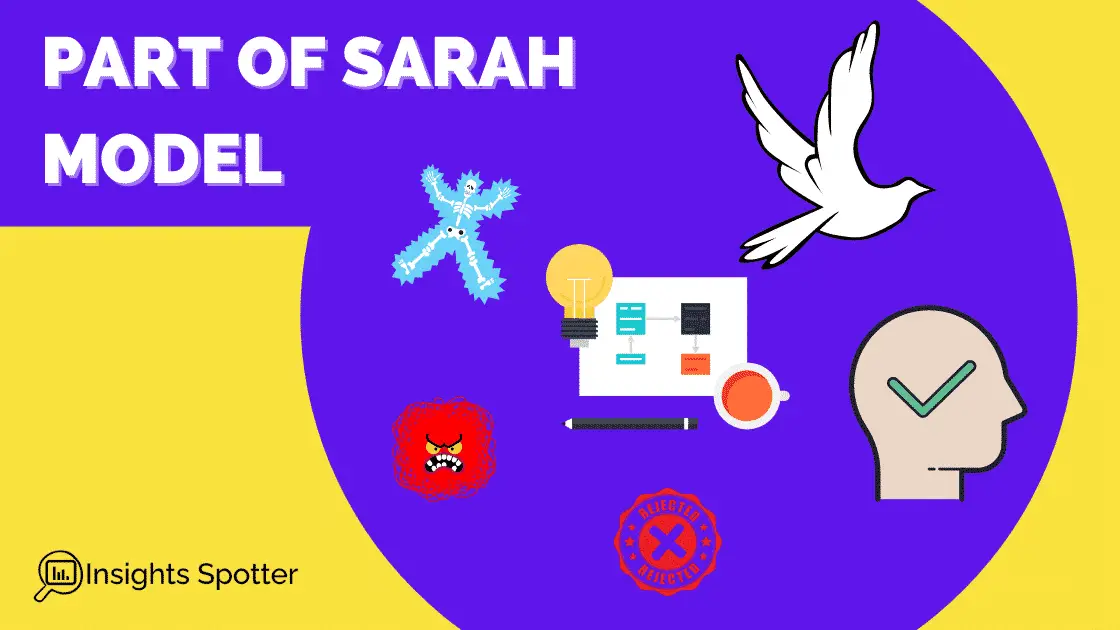
What Is Part Of SARAH Model of Change?
We will go through all 5 emotions experienced in any change and understand what is behind the feeling. Importantly, we will also consider the best course of action for a project professional.
I will also use an imaginary personality conveniently by the name of Sarah, who just heard that her position as business unit manager is affected by new company automation. An automated system will replace most of her staff.
Depending on the situation, people, including Sarah, will likely go through 5 stages. These could come in a mixture of combinations, very quickly one by one, some skipped, or some will run in parallel. There is no strict timeline on how long it takes for each emotion to show up. But one is clear most of them will show up at the end. Differences will be due to the personalities and experiences of each individual as well as the situation. So, let’s start with shock.
Shock In SARAH Model 
The first stage or emotion that people are facing is shock. At this point, nothing is definite for individual, only that things are changing and potentially in the wrong way. There are lots of unknowns.
You will see either strong emotions or no reaction at all. They might not understand the impact of change or might just feel paralysed. It could be too much to process for an individual who will just pretend change is not happening.
What Is The Situation?
Let’s take Sarah. Her boss just came in and informed about significant change, which will remove the need for 75% of Sarah’s staff. Sarah is out of words; she loved working with most of the people. Also, her influence in the organisation would decrease, and this would feel like a demotion. A thousand thoughts are spinning in her head, and she likely to feel shocked now.
What To Do?
Sarah needs help to process information, and the manager should try being respectful, empathetic, supportive, and patient. Plus, the manager should listen and clarify all that needs to be explained, like reasons for a decision or particular business situation. The stage will quickly go into the next step, anger.
ANGER IN SARAH MODEL 
After the shock, people go to anger or anxiety when the situation becomes more transparent. People might be defensive, hostile, enraged or passive-aggressive. This is not time to fight back. Thus, keep your emotions in check and not raise your voice or be overly insistent on putting across your point of view.
Individuals are not interested in change at this stage and will reject anything and everything with too emotional attitude. They will look for someone to blame for feeling miserable, which means they could make you a target. Do not take it personally.
What Is The Situation?
In our example, Sarah started to grasp the impact and became very angry with the manager. Even though the manager had little to do with the change decision, a messenger gets the blame. Of course, Sarah, not being happy, does not want to hear that the change will positively impact her and the organisation. She is quite uncooperative and wants things to be the same.
What To Do?
As a professional manager or project team member, you should be listening to expressed concerns. Demonstrate empathy and ask clarifying questions; you should really try to understand and not just pretend. An excellent way to show that you are trying to understand is to paraphrase to an individual to demonstrate your understanding. Allow them to correct you if necessary.
After you have heard concerns and pain points, discuss if concerns are substantiated. Highlight the project benefit to an individual. Though people are different, and some may need some personal time to process information.
REJECTION IN SARAH MODEL 
When individuals are angry, they usually reject any proposal, idea or thought, especially an argument for change. See, humans brains are excellent at filling in blanks or providing reasoning. Thus, you can expect an individual to give their side of the coin with logical points and reason. Plus, they might raise countless other issues that business should address first.
They will not care about business benefits or objectives; potentially, even giving up altogether, particularly if an individual’s past achievements are affected. Do not expect much positivity at this point, as this is the lowest point in our journey.
What Is The Situation?
It is a bit dangerous both for Sarah and the project team as she may reject the change altogether or try to stop it and hinder the progress. She might feel that there is nothing to lose. We, of course, would like to avoid such a situation.
As anger and rejection go hand in hand, the approach here is very similar. You can only listen, be patient, address concerns, and calmly explain that the change is beneficial to the individual and organisation.
The key is to ensure we do not go off at a tangent or start enabling individuals’ destructive behaviour or thoughts. If you are truly genuine by listening and discussing, you will see the argument dying down. People will start feeling that they are being heard. Thus, there is no need to shout.
If an individual needs to help with the project, a project manager could start creating concrete steps for future work. These should be either simple first steps or most valuable work items to build momentum and start demonstrating the project’s benefits.
Listening and prioritising some quick wins works like magic. But in the end, you need to understand that we are but humans and nothing are so straightforward. The good news is that with the next stage, things become more positive.
ACCEPTANCE IN SARAH MODEL 
The exciting thing is, when people finally accept the change, the brain starts quickly build the adaptation plan. In their head, they start to fully appreciate how the change will impact them and look into how they need to learn living with it or utilise benefits. They may even start seeing some new opportunities coming up.
What Is The Situation?
In Sarah’s example, she has starting to think less about all the horrifying things and shifting to more positive attitudes. New opportunities are coming up and potential business and personal benefits. Now, she just needs to grab them and not let them go.
What To Do?
The message for positive impact for Sarah and the organisation will land much nicer now. We can also start a discussion about how she can more extensively contribute to the project. Thus, she will be feeling more ownership and be part of the team. If you are part of the group, you want to help it.
Your job will also provide positive feedback where it is due. If possible, you would want somebody else in the group to hear that, which will enhance the effect. The project team will want to keep momentum, and Sarah might just become a brilliant example.
There is a lot more on crucial stakeholder management in my previous blog.
HOPE IN SARAH MODEL 
Finally, positive, visible and measurable development to people and organisation, even a small one, creates a strong motivation to join the efforts. Everyone wants to be on the winning team and actively contribute to the project. There is just more energy and inspiration in the company, and you can feel it.
What Is The Situation?
For Sarah, this means that the difference in thoughts is like day and night compared with the beginning. She will likely feel excited about innovation; she will be spending less time managing people and allocating time to improve processes further; potentially, becoming an advocate for change in the organisation. Now, Sarah sees herself as someone who supports the change and will be more willing to accept it next time.
What To Do?
Just find the ways to keep up the momentum and fire burning. You want to listen to everyone’s ideas, create a forum to discuss them. The easiest way to suffocate progress is to ignore people’s enthusiasm, ideas and contributions. Keep up the good work!
SARAH Model Of Change Conclusion
Use SARAH on your next project. As you can see, knowing where individuals are on the SARAH model of change helps you to understand an individual’s emotional state and get their engagement sooner rather than later.
It would be best if you did not get offended if an individual is cold with you. Maybe he/she is still going through the early emotional stages. The key is to keep composed, understand them, help them comprehend benefits, and engage actively when ready to contribute.
Do you remember yourself going through these stages, or have you been dealing with someone who does? Do you agree with these stages, or you would like to add a few more? Comment down below.
If you like to learn more about dealing with people to get results, I recommend reading the classic book “How to win friends and influence people” by Dale Carnegie.

Subscribe to our newsletter!
Latest Blog Posts
- Sustainable Project Management: Trends, Tools, & Strategies
- Unlocking Strategic Value: How NIST CSF 2.0 Shapes Project Choices for Better Outcomes
- Cybersecurity Project Management: Protecting Your Digital Frontier
- What are the Different Types of Planning in Project Management?
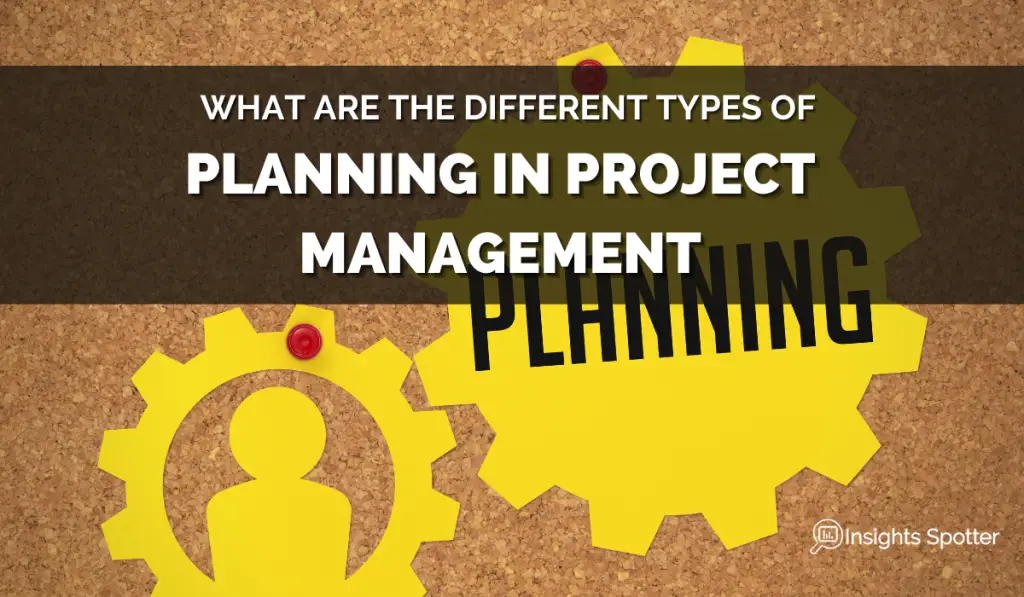
- Transforming Project Management with AI Software: Tools, Challenges, and Best Practices
- Unlocking the Benefits of AI-Powered Project Management

